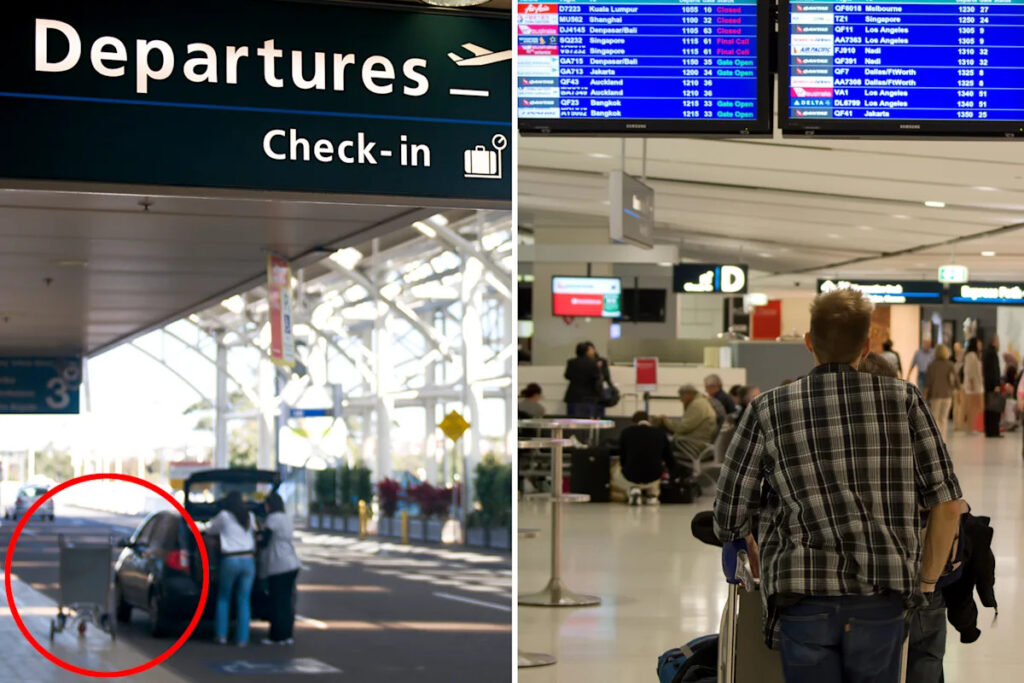
As many Australians prepare for their long-awaited holidays, they often find themselves navigating a maze of expenses. From flights and accommodations to rental cars, the costs can quickly add up. However, for some travelers passing through Sydney Domestic Airport, an unexpected charge has left them feeling frustrated.
One traveler recently expressed his disbelief after discovering a $5 AUD fee to use a luggage trolley at Sydney Domestic Airport. “Wow! $5 AUD to use these trolleys at Sydney Domestic Airport,” he remarked. “What do you think? It says ‘smarte carte,’ I wonder how smart it is, for that price I hope it drives itself.”
Travelers departing from both Sydney’s domestic and international terminals are subject to this fee, though those arriving can use the trolleys for free at the baggage carousels. The charge has been labeled a “rip-off” by some, with reactions ranging from “That’s why nobody uses it!” to “Daylight robbery.”
The Economics Behind Airport Pricing
While Sydney Airport declined to comment on the trolley fees, Brett Landers, Managing Director for Smarte Carte Australia and New Zealand, confirmed that the pricing is determined by the airport. “The decision to charge for trolleys is a decision of the airport with the logic being to offset the costs of providing and managing trolleys at the airport,” he explained.
This revelation comes as part of a broader discussion about the high prices travelers encounter at airports. From food and beverages to basic amenities, the costs often surprise passengers. Reid Polak, a recent traveler, shared his experience of paying $28 for a burrito and a flat white, describing the meal as “terrible.”
“A 600ml water is $7.50. Just because you can charge more, doesn’t mean you should.”
Understanding the Hidden Costs
Consumer expert Gary Mortimer sheds light on the less visible expenses that contribute to high airport prices. “While it’s easy to blame businesses for being greedy, there are some not-so-obvious costs they have to contend with to operate at an airport,” Mortimer stated.
These costs include extended operating hours, which require more staff. Employees must possess an Aviation Security Identification Card (ASIC) to access secure areas, a requirement that incurs additional expenses. The ASIC card alone can cost upwards of $240, typically borne by the employer. Moreover, a national police check is mandatory, costing $56, or $113 if fingerprinting is required.
“When we think about the services sector, there’s a high turnover, which means you’re constantly having to recruit people for your airport business,” Mortimer noted. “They have to be security checked before they can go on to airside, which means, if they only last three months and then leave, there’s more cost for you to actually put another person back on and go through that whole process again.”
Looking Ahead: The Future of Airport Pricing
The controversy over Sydney Airport’s trolley fees highlights a broader issue of transparency and fairness in airport pricing. As airports continue to navigate the challenges of providing services while managing costs, travelers may need to adjust their expectations or seek alternatives, such as bringing wheeled luggage to bypass trolley fees.
Meanwhile, discussions around airport pricing models and consumer expectations are likely to continue. As travelers become more vocal about their experiences, airports may need to reconsider how they balance operational costs with customer satisfaction.
For those planning their next trip, awareness of potential charges and a strategic approach to packing could help mitigate some of the financial surprises encountered at the airport.







